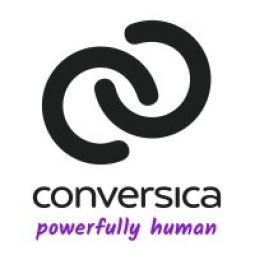Applicable Industries
- Electrical Grids
- Telecommunications
Applicable Functions
- Sales & Marketing
Use Cases
- Leasing Finance Automation
- Material Handling Automation
Services
- System Integration
About The Customer
Sesame Communications is a subsidiary of Internet Brands that helps providers harness the power of the Internet to accelerate new prospect acquisition and transform the end-user experience. The company supports thousands of customers in their efforts to grow and increase profitability in the digital age. Sesame has received numerous industry awards and accolades including Inc. 500|5000 fastest growing technology companies and Deloitte Technology Fast 500. Despite their success, they faced challenges in managing and following up on inbound leads, leading them to seek a solution in Conversica’s AI Sales Assistant.
The Challenge
Sesame Communications, a subsidiary of Internet Brands, was facing a significant challenge in managing their inbound leads. Despite deploying traditional marketing tactics like drip campaigns and lead scoring, the company was struggling with an overload of leads that were not being followed up on. The Director of Marketing, Todd Martini, noted that many of the high scores from lead scoring were not decision makers, but assistants who were watching a lot of webinars. Furthermore, when a Marketing Qualified Lead (MQL) was identified, these leads would go directly to territory managers, leaving a large list of untouched leads. The company was in need of a solution that could effectively manage and follow up on these untouched leads.
The Solution
Sesame Communications turned to Conversica’s AI Sales Assistant, named Olivia, to manage their untouched leads. The AI assistant was integrated into their existing system without the need for outside integrators, making the process simple and straightforward. Olivia was primarily used on email-driven campaigns, following up on leads that the sales team did not have the capacity to reach. This allowed the company to increase their outreach volume and improve their follow up on untouched leads. The AI assistant became a popular addition to the team, with people treating her as if she was a real person. The integration of AI and marketing automation proved to be a successful solution for Sesame Communications, allowing them to reach out to more people without needing a lot of resources.
Operational Impact
Quantitative Benefit

Case Study missing?
Start adding your own!
Register with your work email and create a new case study profile for your business.
Related Case Studies.

Case Study
Hydro One Leads the Way In Smart Meter Development
In 2010, Ontario’s energy board mandated that time-of-use (TOU) pricing for consumers be available for all consumers on a regulated price plan. To meet this requirement, Hydro One needed to quickly deploy a smart meter and intelligent communications network solution to meet the provincial government’s requirement at a low cost. The network needed to cover Hydro One’s expansive service territory, which has a land mass twice the size of Texas, and its customers live in a mix of urban, rural, and remote areas, some places only accessible by air, rail, boat or snowmobile. Most importantly, the network needed to enable future enterprise-wide business efficiencies, modernization of distribution infrastructure and enhanced customer service. To meet these needs, Hydro One conceptualized an end-to-end solution leveraging open standards and Internet Protocols (IP) at all communication levels. The utility drew upon industry leaders like Trilliant to realize this vision.

Case Study
Selling more with Whirlpool
Whirlpool wanted to add connectivity to appliances and transform the company's relationship with customers. Traditionally, Whirlpool interaction with customers was limited to purchases made once every ten years. Connected washer and dryers provide exciting new features like remote management of start times and inter-machine communication.

Case Study
SAS® Analytics for IoT: Smart Grid
Companies face falling revenues, rising infrastructure costs, and increasing risk of outages caused by inconsistent energy production from renewable sources. Less money is coming in as more people and organizations take steps to curb their energy use. Utilities are paying more to maintain and build infrastructure due to increasing complexity, resulting from the rising number of intermittent and variable renewable energy sources connected in the distribution grid.

Case Study
Enel Secures Italian Power Generation Network
Electric energy operators around the world are working to increase the reliability and cyber resiliency of their systems. This includes Enel, a global power company that manages and monitors the Italian power grid. This grid:• Serves 31 million customers• Has a net installed energy capacity exceeding 31 gigawatts• Includes more than 500 power generation plants,including hydroelectric, thermoelectric, and wind• Is managed and monitored by Enel 24/7/365• Is operated by Terna, the Italian Transmission System Operator (TSO)Enel is responsible for the availability of the grid’s underlying ICS and industrial network. It also manages Regional Control Centers and Interconnection Centers which connect with the TSO. The TSO manages the flow of energy to the grid plus controls and remotely regulates the power generation of power plants, increasing and decreasing power production as required. The complex system of interaction and cooperation between Enel and the TSO has strong security implications as well as operational and business challenges.

Case Study
Vodafone Hosted On AWS
Vodafone found that traffic for the applications peak during the four-month period when the international cricket season is at its height in Australia. During the 2011/2012 cricket season, 700,000 consumers downloaded the Cricket Live Australia application. Vodafone needed to be able to meet customer demand, but didn’t want to invest in additional resources that would be underutilized during cricket’s off-season.








